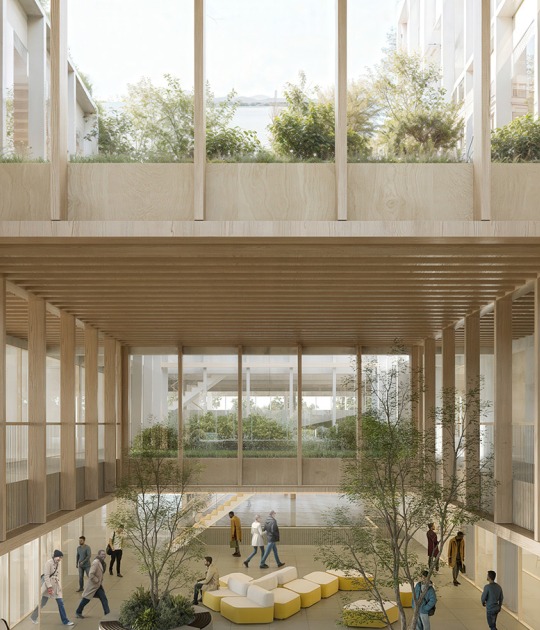Foster + Partners office has submitted a detailed response to the Airports Commission’s call for evidence, addressing surface access, costs, delivery and an analysis of the environmental, economic and social impacts of a new airport on the Isle of Grain in the Thames Estuary.
Acording Foster + Partners its project will allow by creating a short connecting spur. The Isle of Grain can benefit from high-speed rail links to the rest of the UK and the new airport will be less than 26 minutes by train from St Pancras.
There is rising demand for new homes and jobs, in line with population growth – London is growing 20% in the next 20 years and the thrust of development is to the east. The new airport underpins this, and can balance the economies of east and west London, unlocking sites for housing. Heathrow can be transformed into a redevelopment site the size of an inner London borough, in anticipation of London’s inevitable further growth.
The Environment Agency is currently identifying and funding more than 800 hectares of new habitats for wildlife in the estuary, which are being displaced by rising sea levels – this is work that the Thames Hub can help to fund. Rather than spending £1bn to move the M25 to enable Heathrow’s expansion, this money could be better used to protect and replace habitats already under threat.
Norman Foster explains his proposal and ideas below: “Since the Airports Commission submission a year ago, the need for increased airport capacity has become even more urgent. Britain will need to plug-in to the network of major new hub airports being built and planned around the world, for example in Istanbul, Doha, Dubai, Beijing and Mexico City. If you cannot fly through London and connect to the destinations these new hubs offer, then trade will simply go elsewhere.
It is time to get serious about the issue of airport capacity. Britain needs an effective long-term solution, not the usual short-term fix that is Heathrow’s proposed third runway. Rather than boosting growth, expansion at Heathrow would have the opposite effect. The unacceptable levels of risk, noise and pollution would threaten London’s leading reputation as a world city." and Foster added, "In terms of connectivity alone, the Thames Hub would serve 191 long-haul destinations, compared to Heathrow’s 126.”
Read more about METALOCUS’s coverage of the original submission related to the process for approval here.
























